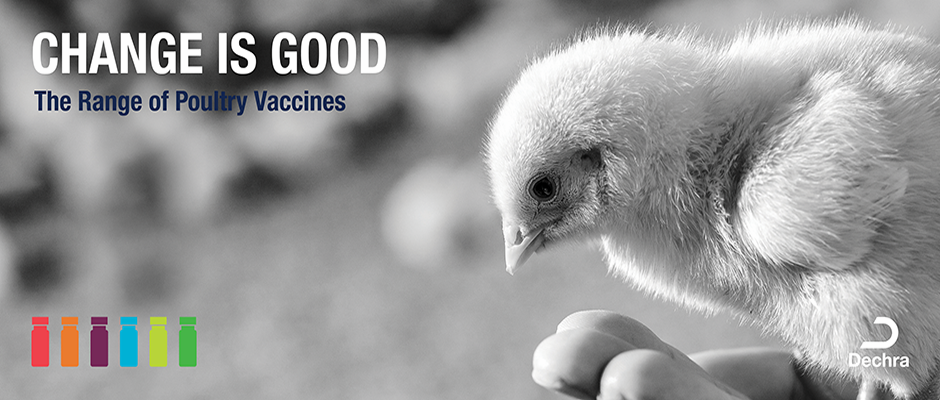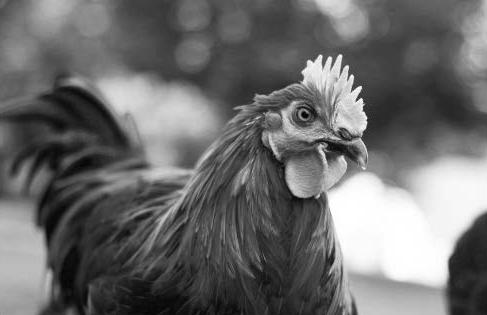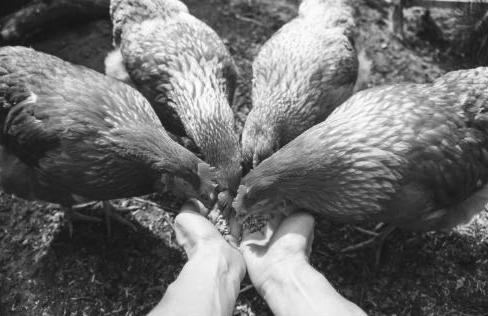
Newcastle disease (ND)
About ND
Newcastle disease (ND) is a highly contagious poultry disease caused by highly virulent strains of avian paramyxovirus type 1 (APMV-1), also known as Newcastle disease virus (vNDV).1
vNDV can infect and produce clinical signs in a wild variety of bird species, making total eradication difficult and present enormous economic danger to poultry wellbeing. APMV-1 is endemic in all countries all over the globe and is mostly characterised by its variability in clincal forms and is also referred to under a variety of names such as: pseudo-fowl pest, pseudo-poultry plague or atypische Geflügelpest.2
Although the virus family is present worldwide, only the very virulent (velogenic) strains of APMV-1 cause the highly acute and lethal "Newcastle disease".
Under clinical conditions the symptoms are often not clear cut, but depending on the pathogenicity of the specific strain of vNDV symptoms can include: high mortality, depression, respiratory signs, nervous disroders and diarrhea. In chickens, the birds are gasping for air and clear mucus is pouring from the beaks. Nervous signs include muscular tremor, contorted necks and paralysis of the limbs. Usually the onset of the disease is rather rapid, averaging around 5-6 days, but this might also deviate depending on the specific virus strain and local conditions.2
ND in its highly pathogenic form is internationally regarded as a notifiable epizootic disease and outbreaks must be reported immediately to the OIE.1
Articles
Publication demonstrates live vaccine against Newcastle disease can be used during egg production add


How did the ND virus evolve over the years?
The first official outbreak of ND have been described in Java, Indonesia, and in Newcastle upon Tyne, England in 1926. ND viruses have been isolated in a wide variety of birds and it is also regarded as a zoonosis, since infection of humans can occur as well, presenting conjunctivitis and flu like symptoms.3 There is neither evidence of human-to-human spreading of ND, nor any serious symptoms of ND in humans though.1
As diagnostic methods have evolved, the ways of describing the infectious agent have also evolved. Earlier attempts of discriminating different vND-virus strains from each other have been based around the pathogenicity of said strains. The terms "velogenic" (high-virulence), "mesogenic" (moderate virulence) and "lentogenic" (mild virulence) have been established.4
Today, there is international agreement that an assessment of the virus in case of a first isolation is based around the intracerebral pathogenicity test (ICPI). But under routine surveillance conditions, molecular chemical analysis of the virus surface proteins or it's genetic material can give a good determination of field virus isolates as well.1
And while lentogenic viruses are widespread, the virulent strains have been mainly problematic in the Middle East, Africa and Asia. There are sporadic outbreaks in other parts of the world too, mostly due to migratory exotic birds being a host reservoir for vNDV.
How to protect flocks against ND?
With the threat of sporadic outbreaks of ND still present, vaccination against ND is still mandatory in many EU member states. So vaccination programs are often controlled by the local government and it's corresponding authorities.
Live virus vaccines have been a cost-effective staple for protection against ND for a longer period of time. In the European Union, only lentogenic APMV-1 are used for vaccination, and common vaccine strains are called Hitchner B1, LaSota or VG/GA. After vaccination the immune cells of the bird produce antibodies against the virus.
Live virus vaccines offer the benefit of being applicable to mass distribution though drinking water or spray. This makes vaccination of large flocks of birds possible in a reasonable amount of time. The drawback to ND live vaccines might be that the virus needs to arrive at the chicken body alive. Improper handling, like high temperature, unbuffered water, residue chemicals or maternal antibodies from the egg yolk in the chick itself might inactivate the virus.2
Furthermore, the chicks are still being infected with a live infective agent, so selecting a vaccine with a low ICPI might prevent vaccine reactions.
References add
- OIE Terrestial Manual (2021), Chapter 3.3.14: Newcastle disease.
- Miller P. J. and Koch G.: „Newcastle disease” In Diseases of Poultry, 14th ed.; John Wiley & Sons, Ames, Iowa USA, 2020; pp. 112–128.
- Swayne D.E. & King D.J. (2003). Avian influenza and Newcastle disease. J. Am. Vet. Med. Assoc., 222, 1534–1540
- Alexander D. J., Senne D. A. (2008). Newcastle disease, other avian paramyxoviruses, and pneumovirus infections. In Diseases of Poultry 12th ed, (2008); pp. 75–116.
Receive any updates and educational content
Discover how Dechra can support you with Newcastle Disease
Learn more about Dechra's vaccines for Newcastle Disease
